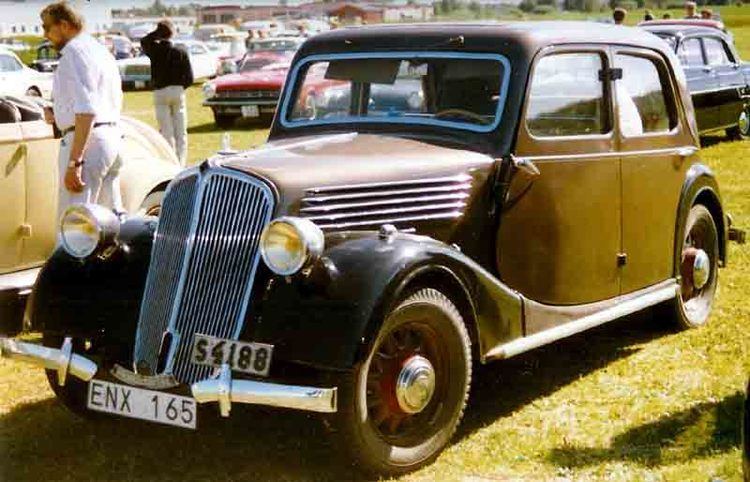Production 1931-1941 | Also called Renault Type KZ | |
 | ||
Class Mid-size / Large family car (D) | ||
The Renault Primaquatre was an automobile produced from 1931 to 1941 by Renault, the last car built before Louis Renault's death in 1944.
Contents
First Generation
The Primaquatre was first exhibited on 29 December 1930 as the Type KZ6, being a development from to the KZ series. Its 4-cylinder engine was of 2120 cc providing a published maximum output of 35 horsepower (26 kW) at 2900 rpm. The claimed maximum speed was 100 km/h (62 mph). The rear wheels were driven via an unsynchronised 3-speed manual transmission.
Second generation
In January 1936 the New Primaquatre (Type ACL1) appeared, featuring with a new 2383 cc (14CV) engine providing up to 48 PS (35 kW; 47 hp) at 3200 rpm.
In following years the types ACL2, BDF1, BDF2 and BDS1 were introduced, and were produced until the early summer of 1940 when the unexpected speed of the German invasion put an end to most passenger car production in France. Two changes towards the end of 1937 were the introduction of Renault's newly developed mechanical brake servo, as well as the removal of one of the two access points for the fuel tank which from now on had to be filled using a single fuel filler on the right hand side of the rear panel.
The last Primaquatre was the Primaquatre Sport (Type BDS2) with the 2.4-litre engine, but with 56 PS (41 kW; 55 hp), type BDF2 receive the engine too of 62 PS (46 kW; 61 hp). One final technical enhancement came in 1940 when Lockheed hydraulic brakes replaced the cable brakes specified for the original design.
Types
First generation:
Second generation:
